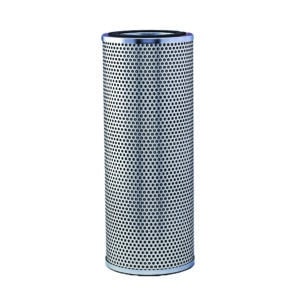Australian Mining sat down with Donaldson to discuss the challenges linked to hydraulic oil cleanliness and the methods mining companies have embraced to overcome them.
Hydraulic fluid cleanliness may not sound glamorous, but it is one of the most vital considerations for machine availability across mining and construction sites.
Dirty oil creates havoc for hydraulic systems, causing excessive component wear and higher maintenance costs. In severe cases, contamination can cause catastrophic failure, resulting in costly downtime and repairs.
Mining companies and contractors that proactively adopt advanced filtration methods by implementing high-efficiency filtration systems are more likely to increase machine availability and meet their production targets as a result.
Revered for its filtration systems in mining and construction industries, Donaldson has launched new hydraulic elements that help achieve the fluid cleanliness levels demanded by systems operating at high pressures.
Donaldson found that in some hydraulic applications it was common to encounter cleanliness codes around 22/20/17, meaning that you could anticipate somewhere between two and four million particles at four microns or larger in every 100ml of hydraulic fluid.
To compound this, some mining applications have tanks and systems that hold thousands of litres of oil. The volume of contamination being pumped through tight tolerance components at extreme pressures can be overwhelming.
High efficiency filtration should be utilised wherever practicable.
By lowering the ISO 4406 cleanliness levels of hydraulic fluid, mine sites can significantly reduce the risk and frequency of equipment maintenance and downtime. This improvement enables them to realise new possibilities with their machinery, enhancing productivity and operational efficiency.
In the absence of an adequate multi-flow filter solution, many operators have implemented kidney loop systems or independent filtration units. These systems contain their own motor, pump and filter elements, providing a steady-state low flow of hydraulic oil to help maintain cleanliness levels.
However, these systems can also be problematic and introduce additional issues.
Donaldson has eliminated the need for costly kidney loop additions in most cases by replacing the existing on-machine return elements with filters that incorporate advanced technology media.
During a general meeting at a mine site, Donaldson addressed the issue of poor machine availability.
Further investigations revealed that the root cause was premature hydraulic component failures due to high cleanliness codes. These high-pressure, tight-tolerance components are very costly to replace, and their failure leads to significant lost production.
The trial commenced, with the identification of a particular machine deemed the ideal candidate for trials. This older machine had 80,000 hours of operation and was due for a filter and oil replacement at the next service interval.
The goal was to reduce the ISO cleanliness codes and extend the service intervals by replacing the original return filters with Donaldson’s new high-efficiency filters.
In the first thousand hours of the trial, Donaldson observed a significant improvement in fluid cleanliness. Consequently, the decision was made to remove the problematic and costly kidney loop filtration system.
Even after removing the kidney loop system, Donaldson continued to see improvements in the fluid’s cleanliness as the aged system was continually polished.
The mine site now regularly achieves cleanliness levels as low as 14/13/9, meaning Donaldson has reduced the contaminants from between two and four million particles down to just 8000 and 16,000 particles at four microns or larger in every 100ml. This translates to a 99 per cent reduction in four-micron contaminants.

It’s common for aged machines to consistently return membrane patch colorimetry (MPC) levels of 50 or more, which is classified as critical.
One unforeseen benefit of the new high-efficiency filters was the reduction of varnish potential. After the first 1000 hours of using Donaldson’s high-efficiency filters, the site experienced an unprecedented reduction in MPC values to less than 10.
Due to the reduction of varnish, the machine’s valves are operating smoother, and there has been a significant decrease in contamination alarms. These improvements have resulted in greater overall machine availability.
This particular machine was only recently parked up due to its age, and the site noted that the machine has never had oil as clean as it does now. Additionally, the varnish potential has never been so low.
Improved machine availability is the key, and Donaldson has accomplished what it set out to do. By providing incredibly clean oil, the company has successfully reduced component wear and ensured parts don’t fail prematurely. Additionally, Donaldson has been able to mitigate the challenges associated with problematic varnish potential.
The site has since implemented high-efficiency filtration across its entire excavator fleet and continues to reap the benefits of incredibly clean oil and low MPC values.
The Australian mining industry is fortunate to have a solutions-driven filtration partner like Donaldson at its side.
While Donaldson may be one of the world’s best-kept secrets, its global footprint is no accident. Through constant innovation, media development and collaboration with customers, Donaldson has established itself as the leader in filtration.
This feature appeared in the July 2024 issue of Australian Mining.




